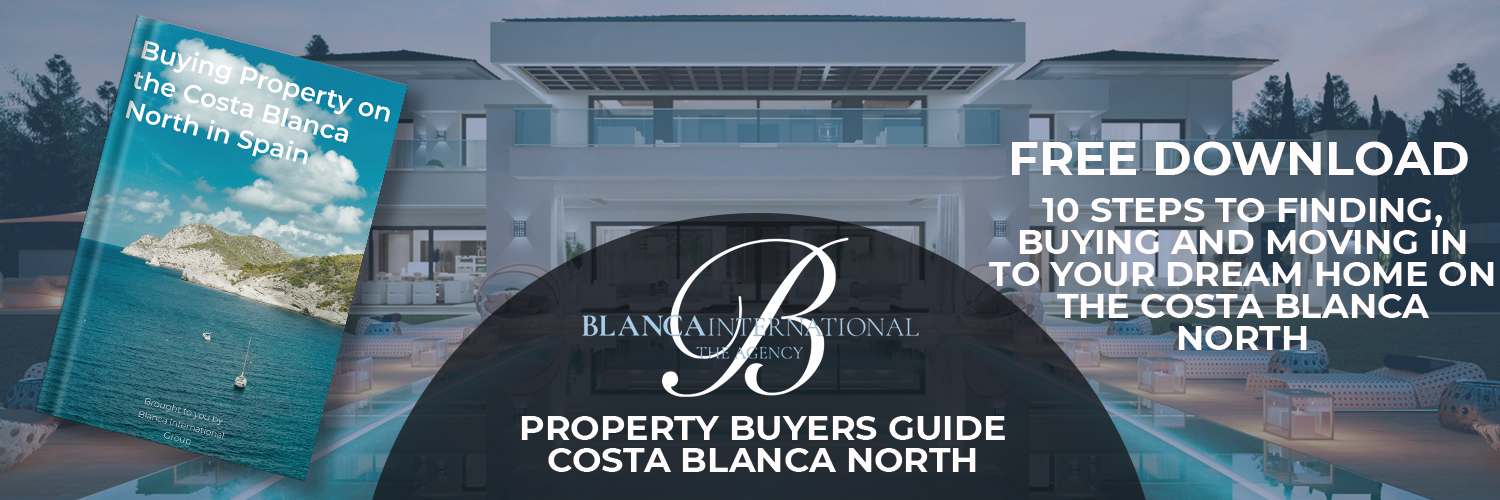There’s a reason why the old town of Javea is a 25-minute walk uphill from the sea.
For hundreds of years since the town of Javea was reconquered from Moorish rule in the 13th century, pirate attacks were common. The central church in Javea is officially known as the ‘Iglesia-fortaleza’ or fort-church and was a place of refuge from North African attacks.
The best known artifact ever found in Javea – a set of 3rd century BC golden bridal jewellery dug up in 1904 – is understood to have been an heirloom buried for safekeeping during a pirate attack. The same goes for the 54 solid gold Roman coins found by snorkelers off the coast in 2021.
But while narrow streets once helped keep Javea safe, the historic centre of Javea now bursts with potted plants, bars and restaurants, Air Bnbs, a daily market and small businesses.
Luckily for anyone visiting today, the old town of Javea has withstood the test of time – and its treasures are not just in the municipal museum.
Top 5 landmarks – The old town of Javea
- Iglesia-Fortaleza de San Bartolomé – the main church in Javea dates back to 1304, just a few decades after the reconquest of the Valencian territory from Moorish rulers. The church was built primarily as a defence against pirate attacks. It’s tall spire was used for keeping watch and is easily spotted from across Javea.
- Mercat Municipal de Xàbia – the municipal market is open everyday except Sunday, from 8am to 8pm Monday to Friday and 8am to 10pm on Saturdays. You can find everything from fresh coffee, orange juice and breakfast to butchers, fresh fruit and vegetables, fresh fish, cheese and artisan products and traditional sourdough flatbreads or ‘cocas’.
- Museu arqueològic i etnològic Soler Blasco – Javea’s municipal museum is open everyday except Monday, usually from 10am to 1:30pm and on some days from 5 to 8pm too. You can find the ‘treasure of Javea’ as well the gold roman coins as told above, plus artefacts gathered from land and sea since the Iberian age through Roman, Muslim and Valencian rule.
- Centre de Salut de Xàbia – Javea locals will know the old town of Javea for the Centre de Salut de Xàbia, where anyone on the Spanish healthcare system makes appointments and uses the emergency A&E service. While not so important for tourists it can help to know there’s a local health facility here.
- Plaça del Convent – the Plaça del Convent is the most popular square in the old town of Javea, and is lined with bars and restaurants. Here is where the roads close for a weekly market on Thursdays, and for bull-running events during the festivals like the Fogueres de Sant Joan. There’s also the Plaza de la Constitución, which is up the road, and a larger square hosting events like Xàbia Jazz and flammable sculptures during Sant Joan.
Where is the old town of Javea?
The old town of Javea is located on a hill that starts on the northern bank of the Gorgos river.
The historic centre of Javea is a 25-minute walk from the port area of Javea and a 40-minute walk from the Arenal beachfront. You can reach it easily by car and there is always a spot to park in the underground parking area beneath the Plaza de la Constitución.
The main street for vehicles through the old town of Javea is one-way and runs from east to west. Most parking spaces on this street are for unloading only, the street is cobbled and any car traffic cannot travel fast.
Javea itself is a 1 hour 15 minutes drive from Alicante Airport and a 1 hour 25 minutes drive from Valencia Airport. It is a 45-minute drive north of Benidorm. The quickest route to Javea to along the AP-7 motorway and exiting either in Benissa when northbound and Denia when southbound.
Javea is a good 25-minute drive once off the motorway.
Top 11 restaurants in the old town of Javea
There are many bars and restaurants in the old town of Javea.
Here’s a quick overview of what you need to know:
- El Convent – this bar in the Plaça del Convent is named after the old people’s home and former convent at the north end of the square. It’s a typical Spanish bar with tapas food and drinks in the centre of a popular square.
- Portitxol – this restaurant occupies a building right on the main street in Javea, and is a great example of typically Mediterranean cuisine.
- Volta i Volta – this restaurant features in the Michelin Guide Javea, as an authentic restaurant in an original old town house featuring Mediterranean cooking.
- Da Giulia – this unmissable Italian restaurant is based in the Plaza de la Marina Alta at the one of the highest points in the old town of Javea. There’s also a cafe across the square.
- La Sucrería – this popular restaurant in the church square in Javea is run by a mixed Spanish-expat team and well known for its home-smoked meats and hand-prepared dishes.
- Donde Fabrizio – this Mediterranean restaurant is housed on a quaint back street in the old town, next to the museum, and is well known for being a popular tapas spot.
- Tasca la Rebotica – this popular restaurant is housed on one of the most beautiful narrow streets in the historic centre of Javea, and leads directly onto the church door entrance.
- Bar Mercat – this bar in the municipal market is always busy, and serves a great array of breakfast, lunch and full meals with lots of local varieties. You can find many other bars in the market, as well as a cocktail bar Puesto 7.
- Asados Cholbi – while you can’t dine in here, the Asados Cholbi is a popular place where locals pre-order a rotisserie chicken and chips.
- La Llum – La Llum is not a restaurant, must is worth noting for being the only nightclub in the old town of Javea.
- El Raconet – El Raconet is another popular bar and restaurant in the Plaça del Convent, and where many people stop by to grab a takeaway sandwich or slice of pizza.
History of the old town of Javea
The hills and caves surrounding Javea carry remnants of Spain’s Iberian settlers – but the town itself has Moorish origins.
The name Javea comes from a Moorish word ‘Xabiga’ meaning well or cistern. Javea is in an area much greener than much of the province of Alicante to the south, and Europe’s deepest underground river (the Moraig river) curiously runs beneath it before it meets the sea at Cala de Moraig in Benitachell.
Javea began to be repopulated by Christians from 1244, after neighbouring Denia capitulated to Jaime I of Aragón who conquered Valencia in 1238. Javea grew primarily as a fishing village and by 1510 grew to around 930 inhabitants.
Frequent pirate attacks forced these Javea residents to build a walled settlement 2km inland from the sea – this became the old town of Javea, and it was protected by a wall until 1877. You can still see remnants of the wall which run alongside the main street for vehicles in Javea’s historic centre.
Javea’s economy was always based on agriculture. Wheat became an important crop, which was milled by the row of windmills you can still spot on the Plana de San Jeroni to the north of the old town of Javea. Later on raisins became a major crop until the phylloxera outbreak in the late 19th century.
Tourism began to drive the Javea economy since 1947, when a Javea local built a bus route to Valencia and set up Javea’s first touristic hotel on the beachfront. Since the 1960s more tourists have arrived and turned orange groves and grapevines into villas and apartments.
The old town of Javea is where most of the town’s local Spanish population live. It’s the centre of Javea’s best festivals and a must-visit for anyone here for a few days.


